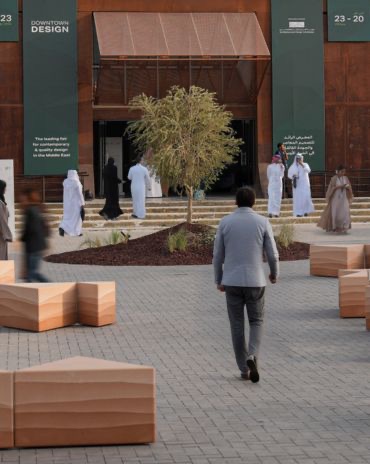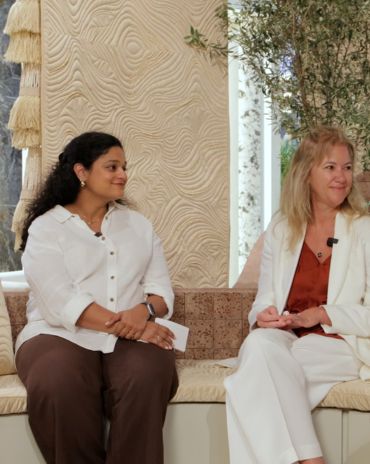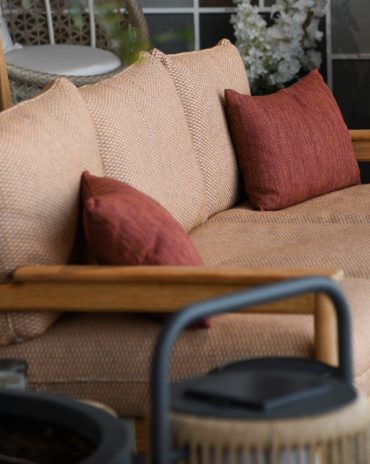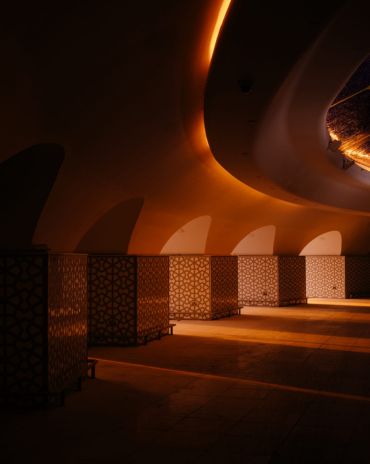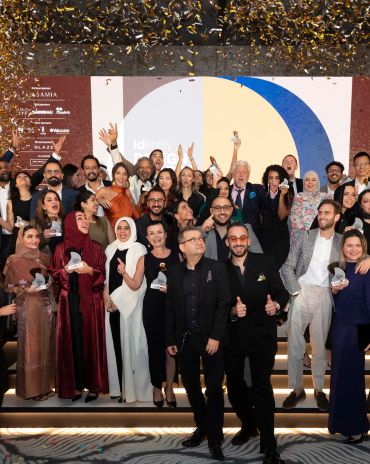Copyright © 2025 Motivate Media Group. All rights reserved.
The first solo show of artist Jordan Nassar showcases his reinterpretation of traditional Palestinian craft
Nassar's work explores the traditional cross-stitching technique called Tatreez

Some encounters have a long-lasting impact on a creative journey. This was the case for self-taught artist Jordan Nassar. Born in 1985 of Palestinian descent, Nassar grew up in New York City – where he is currently based – and was surrounded in his household by the motif of Tatreez, a matrilineal tradition of cross-stitching, which is deeply rooted in the history and culture of Palestine. Traditionally, the wearer’s social and familial status, as well as their different stages of life, could be identified through the colours, patterns and designs of the Tatreez.

Connected to the ideas of nostalgia, nationality and heritage since the end of the 1940s, these motifs have been part of Nassar’s work since his meeting with women-led embroidery collectives across Ramallah, Hebron and Bethlehem; collectives whom he now collaborates with.
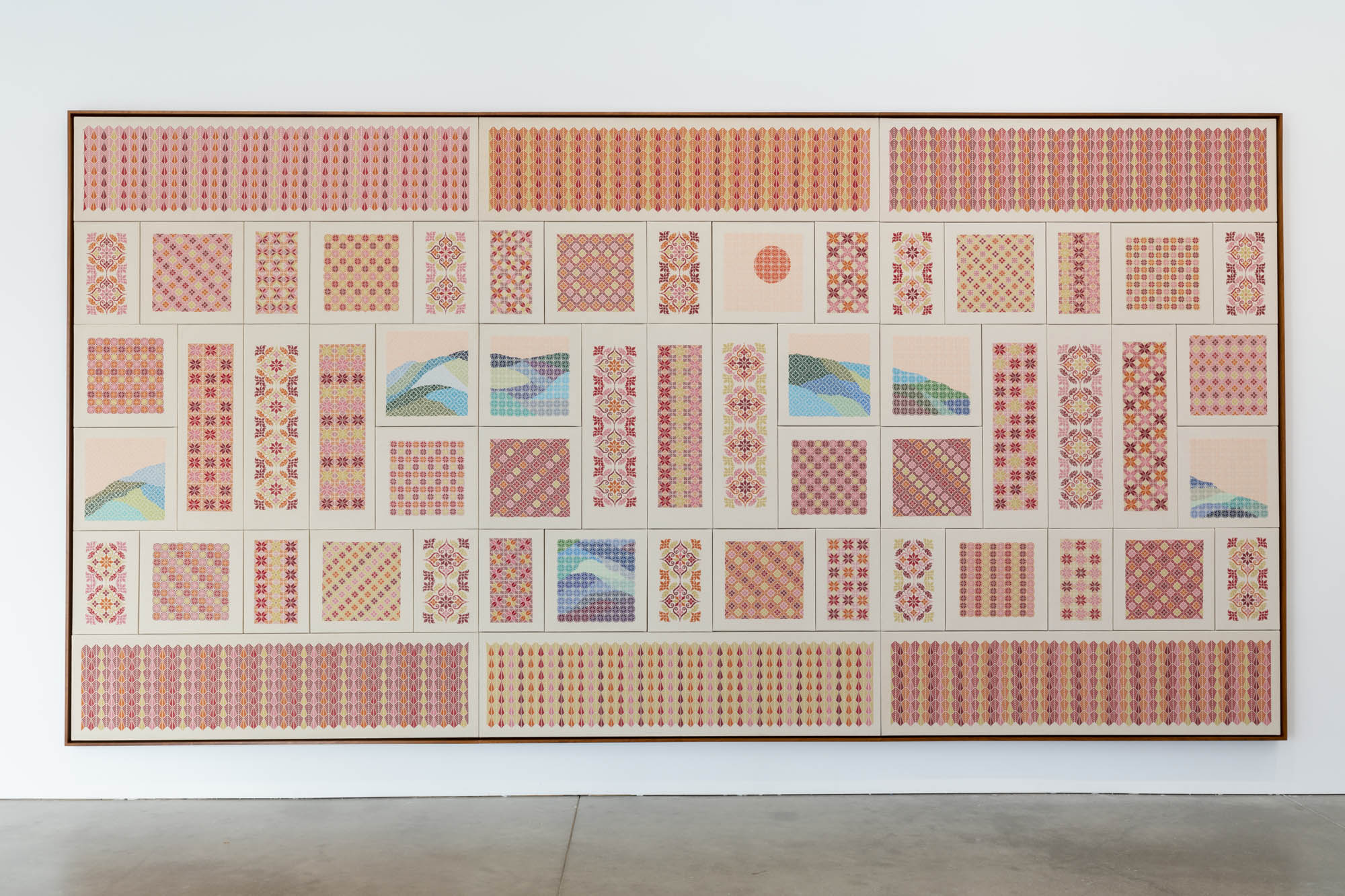
The artist’s first solo show – on view at the Institute of Contemporary Art, Boston until 29 January 2023 – features embroidered works on a monumental scale (as well as recent creations in wood and glass mixed media).

Represented by James Cohan Gallery in New York, Anat Ebgi Gallery in Los Angeles and The Third Line in Dubai, Nassar reinterprets a key aspect of his culture in his own way. The result is visually subtle yet powerful, captivating yet mysterious, rhythmic yet harmonious.
“Nassar’s work, with its complex patterning and painterly attention to form and colour, elevates our understanding of craft traditions as long-standing and deeply meaningful forms of art,” says curatorial assistant Anni Pullagura.
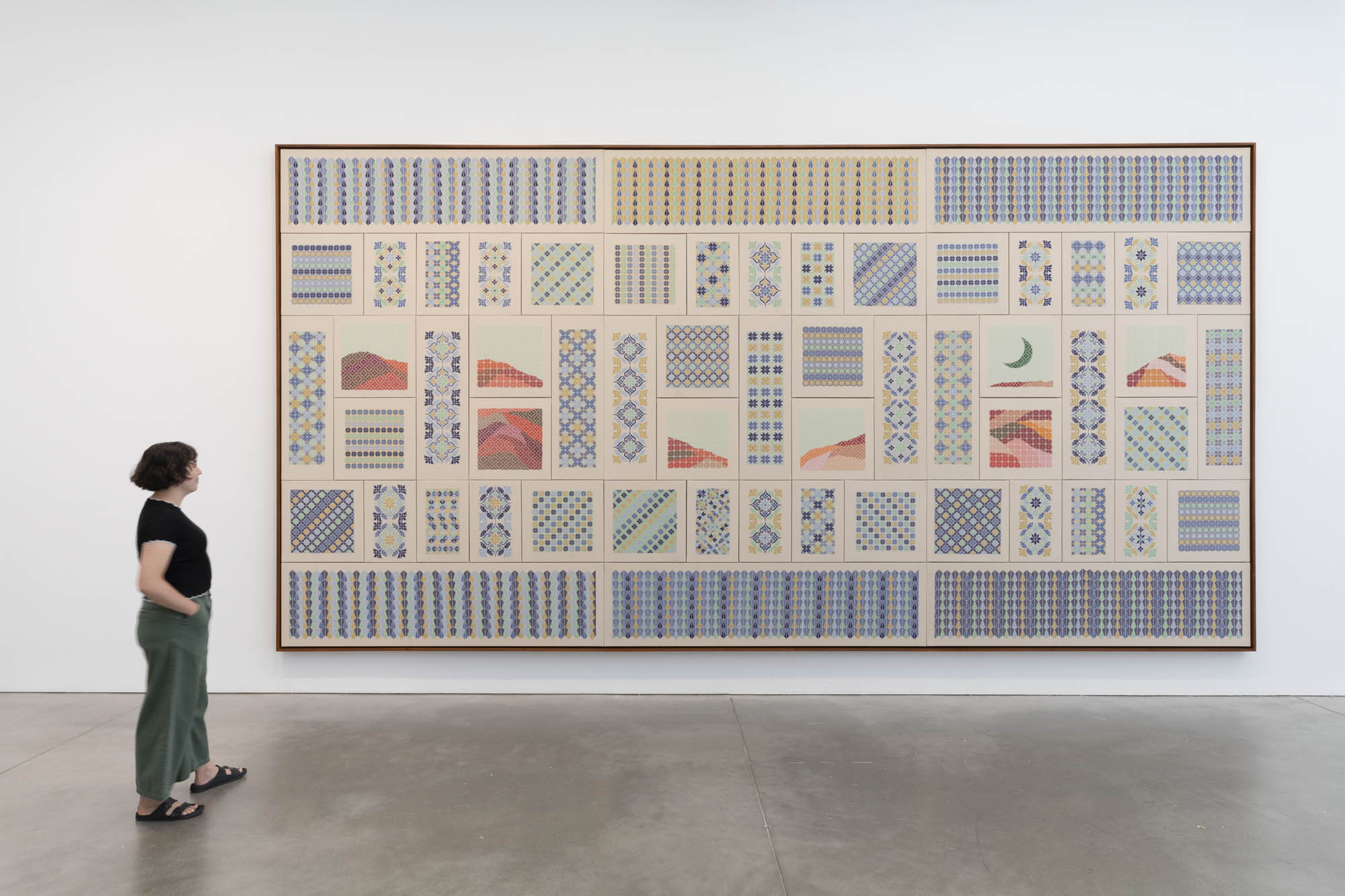
Titled ‘Fantasy and Truth’ in reference to the melancholic poetry collection A Tear and a Smile (1914) by Lebanese writer Gibran Khalil Gibran (1883-1931), the show comprises Nassar’s largest works to date. Each made of 57 individual panels in a variety of warm and cool colours, sizes and shapes, ‘Song of the Flowers’ and ‘Lament of the Field’ abstractly and geometrically evoke a sun rising over a blue mountain and a moon shining across a red valley.
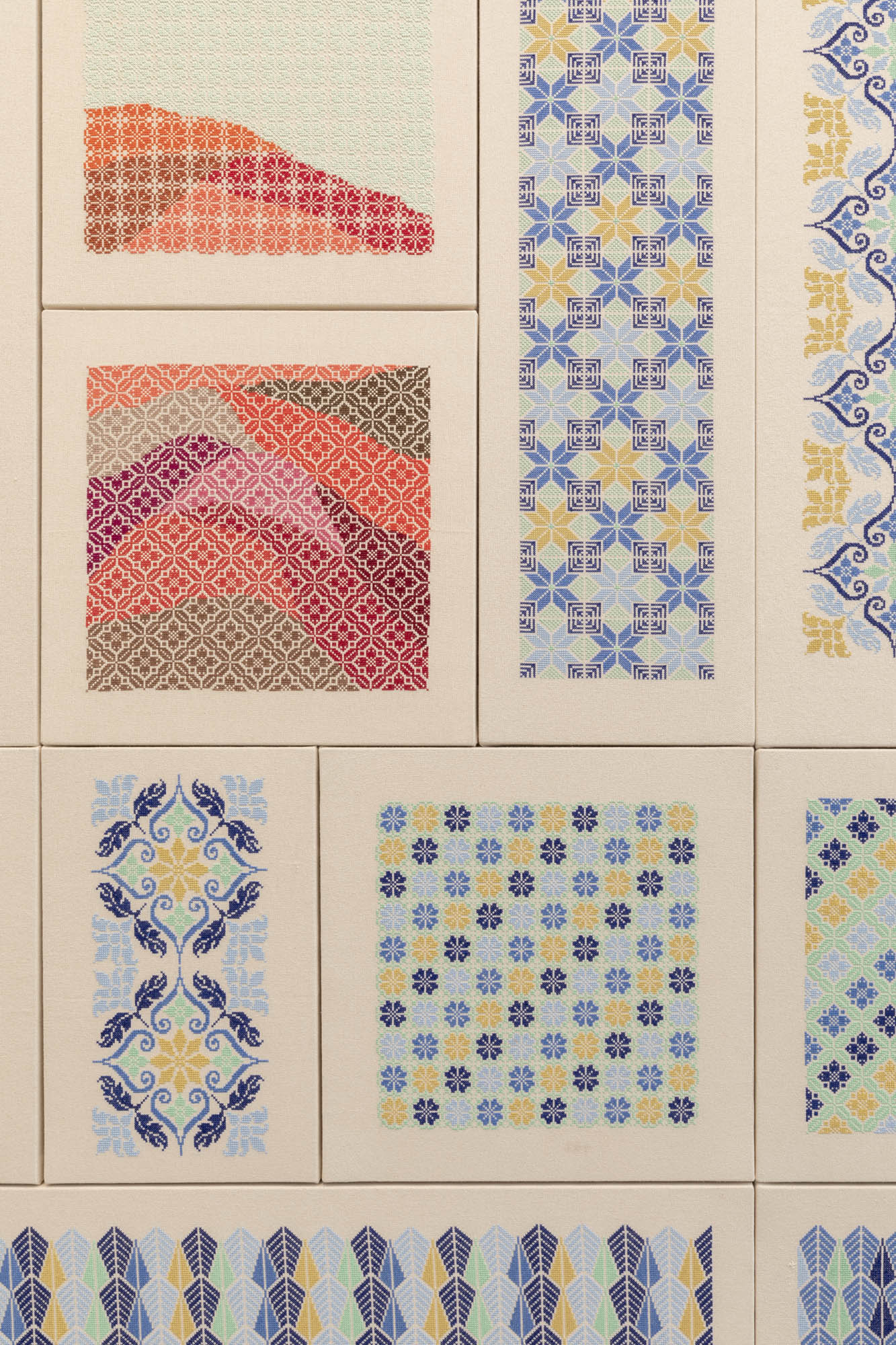
Through his mesmerising artworks made in collaboration with a Palestinian embroidery collective based in the West Bank, Nassar explores what home, land and memory mean and represent – especially in one’s imagination.
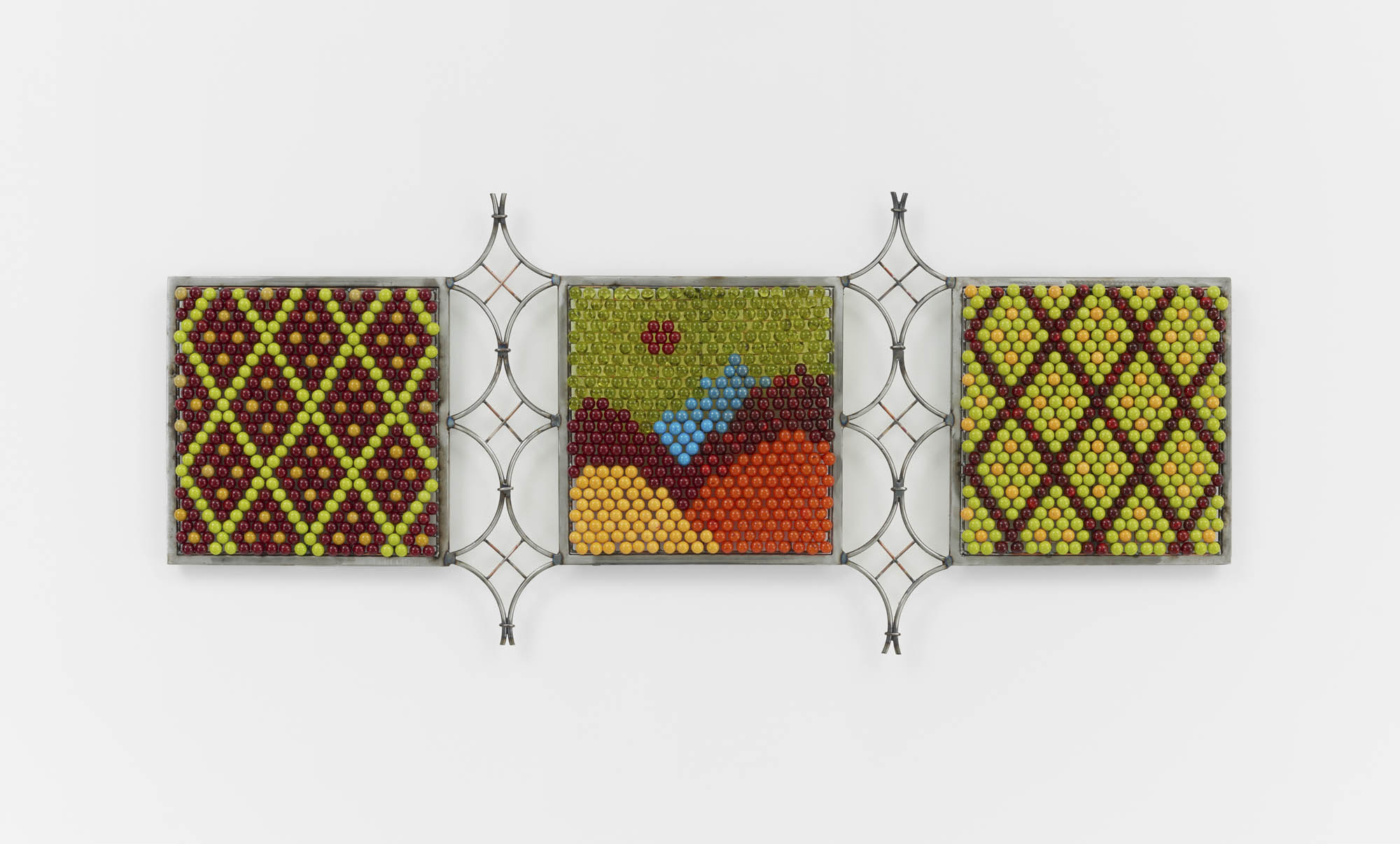
“I like to discuss these landscapes as versions of Palestine as they exist in the minds of the diaspora who have never been there and can never go there,” says Nassar. “They are the Palestine I heard stories about growing up, half-made of imagination. They are dreamlands and utopias that are colourful and fantastical – beautiful and romantic, but bittersweet.”

Interested in starting conversations through his art, Nassar has developed a rich visual language that goes beyond aesthetics to tackle the complexity of reality and identity.
The Latest
The Edge of Calm
This home in Dubai Hills Estate balances sculptural minimalism with everyday ease
In conversation with Karine Obegi and Mauro Nastri
We caught up with Karine Obegi, CEO of OBEGI Home and Mauro Nastri, Global Export Manager of Italian brand Porada, at their collaborative stand in Downtown Design.
An interview with Huda Lighting at Downtown Design
During Downtown Design, we interviewed the team at Huda Lighting in addition to designers Tom Dixon and Lee Broom.
Downtown Design Returns to Riyadh in 2026
The fair will run its second edition at JAX District
Design Dialogues with KOHLER
We discussed the concept of 'Sustainable Futures' with Inge Moore of Muza Lab and Rakan Jandali at KCA International.
Design Dialogues with Ideal Standard x Villeroy & Boch
During Dubai Design Week 2025, identity held a panel at the Ideal Standard x Villeroy & Boch showroom in City Walk, on shaping experiences for hospitality.
A Touch of Luxury
Here’s how you can bring both sophistication and style to every room
Outdoor Living, Redefined
Messara Living and Vincent Sheppard Unveil “Outdoor at Its Best 2026”
NOMAD Opens Its Doors in Abu Dhabi’s Iconic Terminal 1
A modernist landmark is reimagined as a global stage for collectible design, contemporary art, and cultural dialogue.
In photos: Winners at the identity Design Awards 2025
Presenting the winners of 2025 identity Design Awards.
Identity Design Awards 2025 – Winner’s List
Here are the winners of the identity design awards 2025
Hogg’s Hollow
Set along the bend of a quiet river and sheltered within a mature, tree-lined enclave of Toronto, this riverside residence offers a dialogue between structure and softness, restraint and warmth








